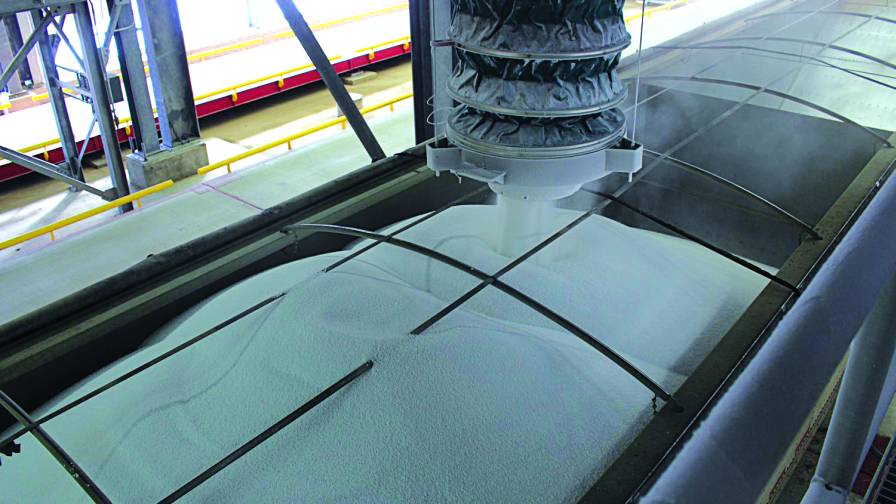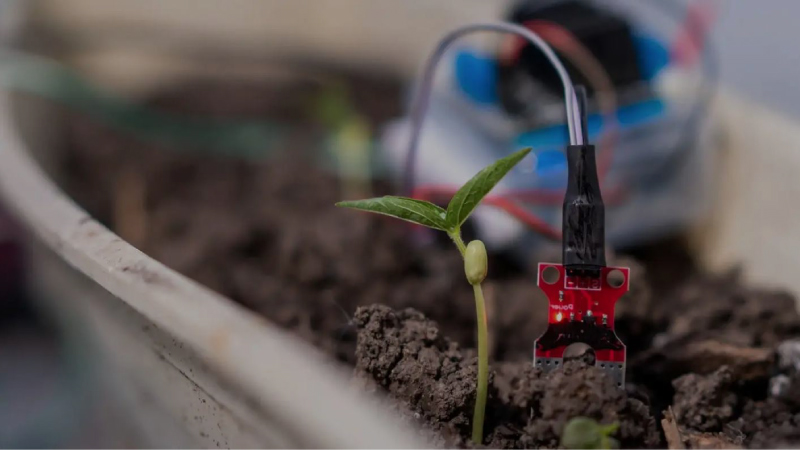What We’re Watching in the Global Nitrogen Market for 2022
Entering 2022, the agriculture value chain finds itself in the healthiest position it has been in at least a decade. Low global coarse grains and oilseed stocks and significant trade demand pushed crop prices to the highest levels in nearly a decade. This propelled farm profitability last year and created positive operating conditions for agriculture-related producers upstream and downstream from farms.
Despite this, some in the agriculture community are not as confident in the new year as they might otherwise be due to rising farm input costs. As a company that has helped feed the crops that feed the world for more than 75 years, CF Industries understands these concerns. Costs are higher this year for farmers — just as costs in our everyday lives are higher too — which creates additional challenges for the year ahead.
Nitrogen fertilizers — the products that CF Industries supplies the agriculture community — have seen their prices rise significantly around the world last year. In fact, prices for ammonia and urea, among the most widely globally traded nitrogen products, reached record highs in 2021. As I write this, some nitrogen prices have come off these record highs, but they remain at levels the agriculture community has not seen in nearly a decade. The price increases in 2021 appear particularly sharp compared to the pricing environment we observed from 2016 through 2020 and into 2021.
Though fertilizer costs are much higher than they have been in recent years, there is good news for farmers in North America: They are paying the lowest fertilizer prices in the world. For example, in early January, the price of urea in New Orleans was more than $160 per ton lower than in the Middle East. Additionally, industry observers expect farmers in the region to be profitable on a cash and land basis in 2022.
Where will nitrogen fertilizer prices go in 2022? It is important to keep in mind that most nitrogen products are globally traded commodities — just like corn, soybeans, wheat, cotton, canola, and other crops — and are generally subject to global supply and demand dynamics that are not easy to predict. That said, these are the factors we believe will be most important in determining the direction of global nitrogen pricing this year.
Nitrogen Demand
One of the key factors driving global nitrogen demand is the same factor driving high crop prices for farmers: The need to replenish global coarse grains stocks. Crop prices have increased as stocks have tightened and forward curves indicate elevated prices through 2023, incentivizing strong plantings globally. This should support robust global nitrogen demand.
North America
In North America, we expect that farmers will continue to plant nitrogen-consuming crops (corn, wheat, cotton, and canola) at high levels given their relatively high front month and futures prices. We are projecting that corn plantings in the United States will be approximately 93 million acres in 2022, similar to 2021. With the crop price outlook, farmers should be incentivized to apply fertilizer. Supporting this outlook was one of the strongest fall ammonia seasons we have experienced in the last decade, with high demand and favorable weather driving significant ammonia purchases in the region.
Brazil and India
We also expect global demand to continue to be led by two of the world’s key urea importing countries. The world’s largest importer of urea is India, and its purchases tend to drive industry sentiment on the state of the global urea trade. This is because the urea trade in India is almost completely controlled by the government, which tenders for urea — i.e., it invites bids from producers and traders for large volumes of urea at one time.
In 2021, India had lower-than-expected urea production from its domestic facilities and did not secure as much urea as expected from the tender process. As a result, urea stocks in the country have been tight and the government is expected to continue to tender regularly into 2022. How often and for how long India tenders will be a key driver of global import demand in 2022.
Brazil will also play an important role in global import demand. Fertilizer purchases in Brazil more closely resemble the commercial environment in North America. Brazil has become one of the largest importers of urea in the world as farm practices and incomes have improved and domestic production has shut down due to the high cost of natural gas in Brazil. According to customs records, urea imports were at 7.79 million metric tons in 2021, a 9% increase compared to the previous year.
Industrial Demand
Although crop prices are leading an increase in fertilizer demand, a better than expected rebound in global GDP growth has supported recovery in industrial demand for nitrogen as well. This has led to higher demand for diesel exhaust fluid, ammonia, urea, and nitric acid from industrial users, increasing competition for nitrogen volumes.
Nitrogen Supply
Entering 2022, we believe nitrogen inventory is low globally, though not just due to high demand. Lower-than-expected global nitrogen production in 2021 — due to severe weather in North America, high maintenance activity worldwide, high energy prices causing capacity shutdowns, and curtailments in Europe and government actions discouraging nitrogen exports — was a critical factor as well.
As we look ahead, some of those factors may not repeat. For example, we do not expect the high levels of maintenance activity that we saw in 2021 to occur again this year. The COVID-19 pandemic forced many producers to delay maintenance originally planned for 2020 out of health and safety concerns. In 2021, many producers worked to catch-up on these activities, which require production to stop while the work is conducted. CF Industries is a good example of the impact this can have. In 2020, CF Industries completed only two major turnarounds due to the pandemic. In 2021, we completed seven. This was one factor in the lower production volumes from our network in 2021 compared to 2020. Our company expects to return to more typical maintenance schedules, and thus higher production levels, in 2022.
Additionally, severe weather can affect production and distribution at any time but is difficult to anticipate. In 2021, both a record cold snap in February and a hurricane in August reduced nitrogen production in North America. If we do not face these challenges again this year, nitrogen production in the region should increase in 2022 compared to last year.
However, global energy prices, government actions, and import activity in some parts of the world are expected to continue to be significant factors in nitrogen supply availability in 2022.
Global Energy Costs
Sharply higher gas costs in Europe drove widespread nitrogen shutdowns on the continent starting in September 2021. These higher natural gas costs made producing ammonia uneconomical for many producers in the region. In January 2022, when gas costs reached their highest levels in Europe at around $60 per MMBTU — compared to $3.50 to $4 per MMBTU in the United States — the implied cost of producing ammonia at an efficient plant was $2,100 per metric ton and the implied cost of producing urea was $1,500 per metric ton. Under these economic conditions, it is not surprising that an estimated 11 million metric tons of ammonia capacity on an annualized basis either was not operating or curtailed in Europe.
Energy prices in Europe have retreated from these highs as numerous shipments of liquefied natural gas have been sent to the region to ease its supply crunch. However, European nitrogen facilities are now the marginal producers in the world, forward curves for natural gas in Europe remain high, and producer profitability in the region will be challenged for the foreseeable future. This is likely to keep ammonia production in the region constrained and support global nitrogen prices at levels well above recent years, even if they are below 2021’s record levels.
Government Intervention in Nitrogen Trade
Though not as visible as the high cost of natural gas in Europe, government actions that promote or restrict export activity have and will continue to impact the market. For example, several governments restricted exports of some nitrogen products late in 2021 to ensure their own domestic supplies were adequate. Most significantly, China restricted exports of urea through the middle of 2022.
Why is this important? In recent years, China has exported 4 million to 5 million metric tons of urea, which is about 10% of the global urea trade volume. With Chinese urea out of the global trade for the time being, countries such as India, which traditionally have sourced major volumes of urea from China, have had to rely on supply from the Middle East and North Africa more than they have in the past. This created additional competition for the constrained supply that is also needed in North America, Brazil, and Europe. This high level of competition for imported tons of nitrogen is unlikely to moderate until at least the middle of 2022 when seasonal demand subsidies and the export restrictions could be lifted.
With regard to UAN, however, foreign government subsidies and continued low-priced import pressure can be expected to have price depressing impacts.
The Year Ahead
Given these supply and demand dynamics — strong global demand, higher global energy prices and government restrictions — we believe that the year ahead will see overall nitrogen pricing at much higher levels than 2016-20, albeit with different challenges for the UAN sector. But we also expect 2022 to be a year of opportunity for farmers in North America, as they sell crops from the world’s best farmland into a positive pricing environment.
We understand the important role nitrogen fertilizer plays in maximizing farm income in this situation given its impact on yield. This is why we remain focused on utilizing our manufacturing, distribution and logistics capabilities to serve our customers, ensuring that farmers will have the nitrogen fertilizer when and where they need it.







